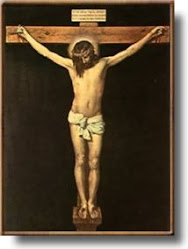The "Jesus Tomb" on TV March 3, 2007
by Sandra Scham
An unconvincing case, and an ulterior motive?
Simcha Jacobovici, the filmmaker behind "The Lost Tomb of Jesus," a Discovery Channel special airing at 8:00 p.m. on Sunday, March 4, believes that he knows where Jesus is buried--in a tomb in the southern Jerusalem neighborhood of Talpiot that was discovered by an Israeli archaeologist in 1980 and, mysteriously according to the filmmaker, not publicized.
He has assembled an impressive number of experts to comment upon his theories, from Israel Antiquities Authority spokesmen to forensic specialists and statisticians. It worth noting, however, that none of these individuals, with the sole exception of Jacobovici himself and his statistical expert, seem entirely convinced by the evidence presented. The constant references to the wildly popular and absurdly wrongheaded thriller The Da Vinci Code might explain the reluctance of many scholars not related to the project to buy into these conjectures. But even one of the film's proponent experts, James Tabor of the University of North Carolina at Charlotte, has said that the tomb only "arguably" might be connected to the Jesus of Nazareth.
Not one to be discouraged by accusations of fraud and impending legal complications, Jacobovici is now taking the case many leaps forward.
We last heard from Jacobovici when he decided to make a film about the "monumental" discovery of an ossuary bearing an inscription "James the brother of Jesus." Along with Herschel Shanks, who promoted the ossuary and other finds now deemed dubious in Biblical Archaeology Review, and others, the filmmaker is still touting the authenticity of that find in the face of charges of inscription forgery from the Israel Antiquities Authority. (See "The James Ossuary" saga for more on this.) Not one to be discouraged by accusations of fraud and impending legal complications, Jacobovici is now taking the case many leaps forward. In the opinion of the filmmaker and his assembled experts, the James ossuary is a lost--more accurately, stolen--antiquity from what he refers to as "the Jesus Family Tomb."
The film itself is a good deal less frenzied in its treatment of the subject than either the press conference that announced it or any of the subsequent media coverage. It is actually a rather interesting exploration of how one proceeds to reconstruct an archaeological context that no longer exists. That the filmmakers were not entirely successful in this is most because of the nature of the evidence as well as to their own absurd expectations. The tomb has been built over with an apartment block, the bones given a decent Jewish burial as Israel's agreement with its religious authorities requires in the case of skeletal remains, and only the limestone repositories remain as a provocative clue to the sacred relics they might have once housed.
For scholars, however, at least those who are not too busy fulminating on television about the publicity-seeking proclivities of those associated with this project, this case is an eminently flawed one.
The evidence is presented step by step, much as any good attorney might do before a jury, to create a compelling case to the layman. For scholars, however, at least those who are not too busy fulminating on television about the publicity-seeking proclivities of those associated with this project, this case is an eminently flawed one. Aside from the fact that many archaeologists who have recovered such ossuaries have testified to the frequency of the names "Jesus," "Mary," and "Joseph" on the burial equipment from this period, the use of statistical analysis alone, or primarily, to prove an archaeological theory is something that many of us have attempted to get away from.
At one time we archaeologists loved statistics, happily performing complex regression and cluster analyses on our data and spitting out conclusions from our computers that, likely, proved the conjectures we had begun with. In the last two decades, however, we have begun to question these facile validations of our common sense. The problem is with the data. The methods may be perfectly suited to a world in which a representative sample, normal distribution or even an idea of what the population in question might be is possible. Archaeological evidence is precisely the opposite. We do not, in point of fact, know any of these things. In the words of one former statistically enthralled antiquarian, "Even when the odds were good, we knew that the goods were odd."
We know that we have seen these names before and we know that the universe from which [the] results are drawn is a flawed one that no amount of mathematical manipulation can overcome.
Thus, unlike Jacobovici and company's impressively qualified statistician, the assertion that there was a 1 in 600 to 1 in 1,000 chance that ossuaries with the names inscribed on the Talpiot examples might be found in one tomb, has failed to impress archaeologists. We know that we have seen these names before and we know that the universe from which statistical analyst Feuerverger's results are drawn is a flawed one that no amount of mathematical manipulation can overcome.
The other part of the filmmakers' case is less complex--and considerably less compelling. Although there were no bones to be found, a DNA analysis was performed on the residue of two ossuaries purportedly having contained the bones of Jesus and his wife Mary Magdalene. While the fact that scientists were able to perform such a test on mere residues from the boxes was impressive, the results of the tests were not. The DNA samples obtained were determined to be not from closely related individuals. Since it was supposedly a family tomb the assumption was made that the individuals must have been married.
A famous tomb...not only contained ossuaries with inscriptions bearing the names Mariamne (Mary) and Joseph but also ossuaries that contained the bones of several individuals at once--including one inscribed as "the Son of Caiaphas" that contained the bones of a female.
Good assumption--if, in fact, it were possible to state with certainty that the presence of unrelated individuals either by blood or marriage in a supposed family tomb is impossible. The truth is that DNA analyses are seldom done on remains from ossuary tombs of this period so the assumption is, again, based on mere conjecture. A famous tomb found in North Talpiot, not very far away from the one in question, not only contained ossuaries with inscriptions bearing the names Mariamne (Mary) and Joseph but also ossuaries that contained the bones of several individuals at once--including one inscribed as "the Son of Caiaphas" that contained the bones of a female. Pity the poor archaeologists with this kind of record to work with but, at least, we are not often burdened these days with the mandate that we find biblically related artifacts to validate our work.
Despite its unsound premise there are two moments in this film that should speak to the scholar even if the rest of it fails to do so. In one segment Jacobovici argues with an Antiquities Authority official about the identification of an ossuary from the North Talpiot tombs with the high priest Caiaphas of New Testament fame. This is, indeed, a case of Israeli archaeology being, in effect, hoisted on its own petard. If the Caiaphas identification is a valid one--which we doubt--why not the identifications that Jacobici is proposing?
Another telling part of the film is Jacobovici's discovery of the discarded Book of Jonah in his tomb, put there in modern times by rabbis who needed to dispose of them in a consecrated space. Jonah, so the filmmaker tells us, was essentially the world's first true missionary. It is presented as yet another "coincidence" that has led the filmmaker to his inevitable conclusions but one wonders if this particular moment actually explains the motivations of the individuals connected with this project more fully than the supposed scientific evidence.
Sandra Scham is a contributing editor to ARCHAEOLOGY and the editor of Near Eastern Archaeology.
See also, "Titanic Find or Sinking Feeling?."
Jodi Magness of the University of North Carolina at Chapel Hill weighs the evidence on the Archaeological Institute of America website.
© 2007 by the Archaeological Institute of America
www.archaeology.org/online/reviews/jesustomb2.html
CHRISTIAN RELIGION ARTICLES
Iscriviti a:
Commenti sul post (Atom)



































Nessun commento:
Posta un commento